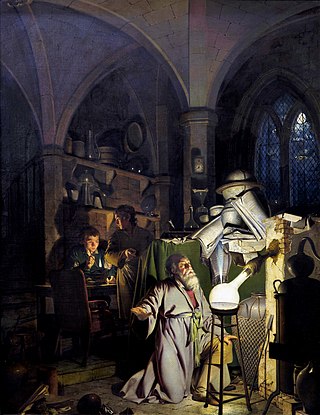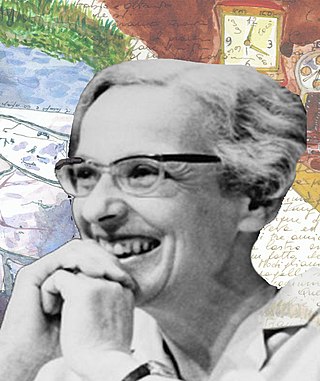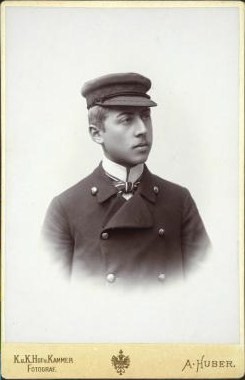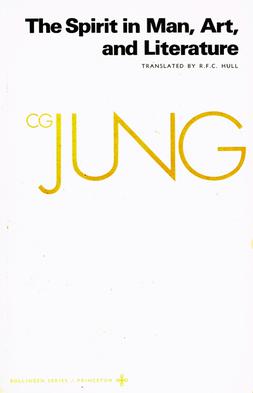
Carl Gustav Jung was a Swiss psychiatrist and psychoanalyst who founded analytical psychology. He was a prolific author, illustrator, and correspondent, and a complex and controversial character, presumably best known through his "autobiography" Memories, Dreams, Reflections.
Collective unconscious refers to the unconscious mind and shared mental concepts. It is generally associated with idealism and was coined by Carl Jung. According to Jung, the human collective unconscious is populated by instincts, as well as by archetypes: ancient primal symbols such as The Great Mother, the Wise Old Man, the Shadow, the Tower, Water, and the Tree of Life. Jung considered the collective unconscious to underpin and surround the unconscious mind, distinguishing it from the personal unconscious of Freudian psychoanalysis. He believed that the concept of the collective unconscious helps to explain why similar themes occur in mythologies around the world. He argued that the collective unconscious had a profound influence on the lives of individuals, who lived out its symbols and clothed them in meaning through their experiences. The psychotherapeutic practice of analytical psychology revolves around examining the patient's relationship to the collective unconscious.

The philosopher's stone is a mythic alchemical substance capable of turning base metals such as mercury into gold or silver. It is also called the elixir of life, useful for rejuvenation and for achieving immortality; for many centuries, it was the most sought-after goal in alchemy. The philosopher's stone was the central symbol of the mystical terminology of alchemy, symbolizing perfection at its finest, divine illumination, and heavenly bliss. Efforts to discover the philosopher's stone were known as the Magnum Opus.

Analytical psychology is a term coined by Carl Jung, a Swiss psychiatrist, to describe research into his new "empirical science" of the psyche. It was designed to distinguish it from Freud's psychoanalytic theories as their seven-year collaboration on psychoanalysis was drawing to an end between 1912 and 1913. The evolution of his science is contained in his monumental opus, the Collected Works, written over sixty years of his lifetime.
In analytical psychology, the shadow is an unconscious aspect of the personality that does not correspond with the ego ideal, leading the ego to resist and project the shadow, leading to a conflict with it. In short, the shadow is the self's emotional blind spot - the part the ego does not want to acknowledge - projected as archetypes—or, in a metaphorical sense-image complexes, personified within the collective unconscious; e.g., trickster.

Marie-Louise von Franz was a Swiss Jungian psychologist and scholar, known for her psychological interpretations of fairy tales and of alchemical manuscripts.
The anima and animus are a syzygy of dualistic, Jungian archetypes among the array of other animistic parts within the Self in Jungian psychology, described in analytical psychology and archetypal psychology, under the umbrella of transpersonal psychology. The Jungian parts of the Self are a priori part of the infinite set of archetypes within the collective unconscious. Modern Jungian clinical theory under the analytical/archetypal-psych framework considers a syzygy-without-its-partner to be like yin without yang: countertransference reveals that logos and/or eros are in need of repair through a psychopomp, mediating the identified patient's Self; this theoretical model is similar to positive psychology's understanding of a well-tuned personality through something like a Goldilocks principle.
In alchemy, nigredo, or blackness, means putrefaction or decomposition. Many alchemists believed that as a first step in the pathway to the philosopher's stone, all alchemical ingredients had to be cleansed and cooked extensively to a uniform black matter.

The Self in Jungian psychology is a dynamic concept which has undergone numerous modifications since it was first conceptualised as one of the Jungian archetypes.

Herbert Silberer was a Viennese psychoanalyst involved with the professional circle surrounding Sigmund Freud which included other pioneers of psychological study as Carl Gustav Jung, Alfred Adler and others. He had a background in athletics and sports journalism.
The Jungian interpretation of religion, pioneered by Carl Jung and advanced by his followers, is an attempt to interpret religion in the light of Jungian psychology. Unlike Sigmund Freud and his followers, Jungians tend to treat religious beliefs and behaviors in a positive light, while offering psychological referents to traditional religious terms such as "soul", "evil", "transcendence", "the sacred", and "God". Because beliefs do not have to be facts in order for people to hold them, the Jungian interpretation of religion has been, and continues to be, of interest to psychologists and theists.
Axiom of Maria is a precept in alchemy: "One becomes two, two becomes three, and out of the third comes the one as the fourth." It is attributed to 3rd century alchemist Maria Prophetissa, also called Mary the Jewess, sister of Moses, or the Copt. A more detailed quote was provided by the seventh-century alchemistic author called Christianos, who cited that what Maria uttered was "One becomes two, two becomes three, and by means of the third and fourth achieves unity; thus two are but one". Marie-Louise von Franz also gave an alternative version, which states: "Out of the One comes Two, out of Two comes Three, and from the Third comes the One as the Fourth." The axiom served as a recurring theme associated with alchemy for over seventeen centuries.

Rubedo is a Latin word meaning "redness" that was adopted by alchemists to define the fourth and final major stage in their magnum opus. Both gold and the philosopher's stone were associated with the color red, as rubedo signaled alchemical success, and the end of the great work. Rubedo is also known by the Greek word iosis.

In alchemy, albedo, or leucosis, is the second of the four major stages of the Magnum Opus, along with nigredo, citrinitas and rubedo. It is a Latinicized term meaning "whiteness". Following the chaos or massa confusa of the nigredo stage, the alchemist undertakes a purification in albedo, which is literally referred to as ablutio – the washing away of impurities. This phase is concerned with "bringing light and clarity to the prima materia ".

Two Essays on Analytical Psychology is volume 7 of The Collected Works of C. G. Jung, presenting the core of Carl Jung's views about psychology. Known as one of the best introductions to Jung's work, the volumes includes the essays "The Relations between the Ego and the Unconscious" and "On the Psychology of the Unconscious" (1943).

Alchemical Studies, volume 13 in The Collected Works of C. G. Jung, consists of five long essays by Carl Jung that trace his developing interest in alchemy from 1929 onward. Serving as an introduction and supplement to his major works on the subject, the book is illustrated with 42 drawings and paintings by Jung's patients.

The Collected Worksof C. G. Jung is a book series containing the first collected edition, in English translation, of the major writings of Swiss psychiatrist Carl Gustav Jung.
Jungian archetypes are a concept from psychology that refers to a universal, inherited idea, pattern of thought, or image that is present in the collective unconscious of all human beings. The psychic counterpart of instinct, archetypes are thought to be the basis of many of the common themes and symbols that appear in stories, myths, and dreams across different cultures and societies. Some examples of archetypes include those of the mother, the child, the trickster, and the flood, among others. The concept of the collective unconscious was first proposed by Carl Jung, a Swiss psychiatrist and psychoanalyst.
In Jungian psychology, the Wise Old Woman and the Wise Old Man are archetypes of the collective unconscious.

Dream psychology is a scientific research field in psychology. In analytical psychology, as in psychoanalysis generally, dreams are "the royal road" to understanding unconscious content.









